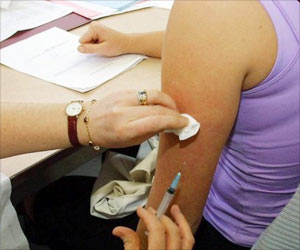SAGE’s review concluded that a single-dose Human Papillomavirus (HPV) shot is comparable to 2-dose vaccine and protects against HPV — the virus that causes cervical cancer.
“This could be a game-changer for the prevention of the disease; seeing more doses of the life-saving jab reach more girls,” the SAGE said in a statement.
The SAGE also recommended updating dose schedules for HPV: one or two-dose schedule for the primary target of girls aged 9-14; one or two-dose schedule for young women aged 15-20; and two doses with a 6-month interval for women older than 21.
“The HPV vaccine is highly effective for the prevention of HPV serotypes 16 & 18, which cause 70 percent of cervical cancer,” said Dr Alejandro Cravioto, SAGE Chair.
“SAGE urges all countries to introduce HPV vaccines and prioritize multi-age cohort catch up of missed and older cohorts of girls. These recommendations will enable more girls and women to be vaccinated and thus prevent them from having cervical cancer and all its consequences over the course of their lifetimes.”
Often referred to as the ‘silent killer’ and almost entirely preventable, cervical cancer is a disease of inequity of access.
More than 95 percent of cervical cancer is caused by sexually transmitted HPV, which is the fourth most common type of cancer in women globally with 90per cent of these women living in low- and middle-income countries.
Worldwide, cervical cancer kills a woman every two minutes as too many women and girls in low- and middle-income countries don’t have access to these vaccines. Due to cost and limited vaccine supply, coverage has been low in areas with the highest cervical cancer burden. Currently, just 15 percent of women worldwide are vaccinated against HPV.
“The option for a single dose of the vaccine is less costly, less resource intensive and easier to administer,” said WHO Assistant Director-General Dr Princess Nothemba (Nono) Simelela.
“It facilitates implementing catch-up campaigns for multiple age groups, reduces the challenges linked to tracing girls for their second dose and allows for financial and human resources to be redirected to other health priorities,” Simelela added.
Source: IANS



